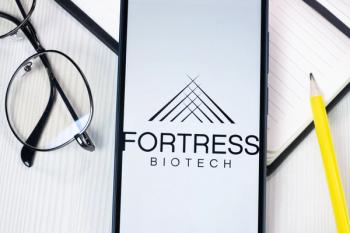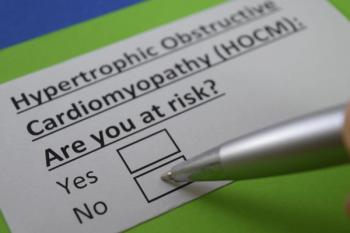
Latest on Pediatric Depression Treatments
Further evidence-based antidepressant treatments are needed for children and adolescents with depression.
To date, there are only 2 medications that have US Food and Drug Administration (FDA) approval for the acute treatment of major depressive disorder in children and adolescents: fluoxetine (ages 8 to 17 years) and escitalopram (ages 12 to 17 years). Placebo response rates in the 50% range have contributed to negative findings in double-blind placebo-controlled antidepressant trials for the treatment of major depression in youth. Further evidence-based antidepressant treatments are needed for children and adolescents with depression. Recent studies provide new information about treatment for depression in youth.
Duloxetine
There have been 2 prior randomized double-blind placebo-controlled trials that evaluated the efficacy of duloxetine in the treatment of major depression in children and adolescents.1,2 Fluoxetine was the active control in these studies. Duloxetine was not statistically different from placebo on change from baseline to endpoint on the Children’s Depression Ratings Scale-Revised (CDRS-R) total score. Similarly, fluoxetine did not statistically differ from placebo. These studies were considered to be inconclusive since neither duloxetine nor fluoxetine separated from placebo on the primary outcome measure.
To further evaluate the efficacy and safety of duloxetine, Saito et al conducted a 6-week randomized double-blind placebo-controlled trial for treatment of children and adolescents with major depressive disorder in Japan.3 In this trial, 149 youth aged 9 to 17 years were randomized to duloxetine or placebo. All participants received 4 video sessions of psychoeducation.
Duloxetine final doses were either 40 or 60 mg/day. There was no significant difference on CDRS-R total score from baseline to endpoint between the duloxetine group and placebo group. Response rates (> 50% improvement on CDRS-R) were similar between duloxetine (32.4%) and placebo (32.4%) groups. The most common treatment-emergent adverse events for duloxetine were nausea, somnolence, decrease appetite, and nasopharyngitis.
Vortioxetine
The efficacy and safety of vortioxetine was assessed in adolescents (aged 12 to 17 years) with major depressive disorder.4 To minimize placebo response, this study used a 4-week single-blind lead-in period during which adolescents received a standard 3 session Brief Psychosocial Intervention (BPI) plus placebo. To reduce expectation bias, participants and their families were blinded to the time of the randomization. After the 4-week lead-in period, those patients who did not respond to treatment were randomized to 8 weeks of continued BPI plus double-blind treatment with vortioxetine 10 mg, vortioxetine 20 mg, fluoxetine 20 mg (active control), or placebo.
In the lead-in, 784 patients were enrolled and 616 were randomized to 1 of the 4 treatments. The primary outcome measure was change in CDRS-R total score from randomization to week 8. The average effect of the 2 doses of vortioxetine was compared to placebo, and there was no significant difference between vortioxetine and placebo on the primary outcome measure. There was a statistically significant difference between fluoxetine and placebo on the primary endpoint. Response rates (≥ 50% change from randomization in CDRS-R total score) were 42% for vortioxetine 10 mg, 43% for vortioxetine 20 mg, 50% for fluoxetine, and 36% for the placebo groups. Importantly, the placebo response rate in this study was lower than the typical 50% range for other antidepressant trials in adolescents. This may be attributable to the single-blind lead-in and blinding for participants and families as to the timing of randomization employed in this study design. Of note, 13% (103 of 777 patients) of participants responded to treatment during the single-blind treatment phase. Treatment-emergent adverse events with an incidence of 5% or more for vortioxetine treatment were nausea, headache, vomiting, nasopharyngitis, diarrhea, and dizziness.
Adjunctive Antipsychotic Use
Antipsychotics are used to treat depression in children and adolescents who have not responded to prior treatment with an antidepressant. To date, there are no controlled trials of combination
This retrospective cohort study used the Health Insurance Review and Assessment claims database criteria in Korea. Children and adolescents aged 2 to 18 years with depression who began treatment with antidepressants between 2010 and 2018 were included in the study population. The incidence of movement disorders (Parkinsonism, dystonia, extrapyramidal symptoms, chorea, and tics) and seizures were assessed in 4 time-varying exposures with antidepressant-only use, antipsychotic-only use, concomitant use, and no use.
The final cohort included 9890 children and adolescents. The risk of movement disorders increased during the period of concomitant use (adjusted hazard ratio [aHR], 3.68) and antipsychotic-only use (aHR, 3.84) compared with antidepressant-only use. Similarly, the risk for seizures increased during the period of concomitant use (aHR, 2.06) and antipsychotic-only use (aHR, 2.05) compared to antidepressant-only use. For both cohorts, the antipsychotic dose in the concomitant use was lower than the dose in the antipsychotic-only use group. Higher dose of antipsychotics was associated with an increased risk of movement disorders (low dose: aHR, 3.28; high dose: aHR, 5.38). Similarly, increasing the daily dose of antipsychotics was associated with an increased risk of seizure development (low dose: aHR, 1.91; high dose: aHR, 2.30).
During the period of concomitant use of antipsychotic and antidepressants, the risk of movement disorder was highest with haloperidol, followed by polypharmacy, aripiprazole, risperidone, and quetiapine. Risk of seizure was highest with polypharmacy, followed by
Agomelatine
Although not commercially available in the United States, agomelatine efficacy and safety were evaluated for the treatment of children and adolescents with major depressive disorder receiving psychosocial counseling in 9 countries.6 After a 3-week run-in period, 400 children and adolescents (aged 7 to 17 years) who were unresponsive to psychosocial therapy were randomized to agomelatine (10 mg/day or 25 mg/day), active control (fluoxetine 10 to 20 mg), or placebo for a 12-week trial. Standardized manualized psychosocial counseling was continued throughout the double-blind randomized controlled trial. At week 12, agomelatine 25 mg/day was statistically significant from placebo on the primary outcome measure of change in the CDRS-R a total score from baseline. Similarly, fluoxetine was significantly superior to placebo. Although statistically significant, Cohen’s effect size for agomelatine 25mg/day was small (0.29) and similar to fluoxetine (0.26).
The most frequent adverse events with agomelatine were thirst, dry mouth, and weight increase. Agomelatine has been associated with the potential to increase liver enzyme concentrations in the blood. The incidence of reversible aminotransferase increases more than 3 times the upper limit of normal was 1% in both agomelatine groups, 2% in fluoxetine group, and 0% in the placebo group in this trial.
Esketamine
In a case series, the effectiveness of a single esketamine administration either subcutaneous (SC) or intravenous (IV) on reducing depressive symptoms and
A significant decrease in depressive symptoms (mean total Montgomery-Asberg Depression Rating Scale score) and suicidal ideation was found from baseline to 24-hour postadministration. The most frequently reported adverse events were dissociation (50%), dizziness (40%), and drowsiness (30%). There was no treatment-emergent suicidality. Although the results are promising, large-scale controlled trials are necessary to further assess the efficacy of esketamine for treatment of depression and suicidality in adolescents with major depression.
Electroconvulsive Therapy
In addition to antidepressant medication,
Most studies used the Clinical Global Impression Scale as a measure of improvement and reported response rates for depression ranging from 53% to 77%. For those studies that used objective depression symptom ratings scales, treatment improvement averaged 64%. For those studies with n > 30, response rates for depression were 70 to 82%. The Mini-Mental State Exam was used in 7 studies, and there was no evidence of significant posttreatment cognitive impairment. However, subjective reports of cognitive symptoms were common, particularly short-term memory complaints. Other common adverse effects reported were headache, nausea, vomiting, confusion, agitation, and muscle soreness. Treatment-emergent mania and prolonged seizures were reported in some cases. Discontinuation due to adverse effects occurred in 1.5% of cases.
Based on this review, the investigators suggest that ECT is safe and effective for the treatment of mood disorders in child and adolescent populations and should be considered in severe and treatment-refractory cases. The investigators acknowledge the limitation of the data since most of the literature was case series. Further investigation of the efficacy of ECT for treatment-resistant mood disorders in children and adolescents is needed.
References
1. Atkinson SD, Prakash A, Zhang Q, et al. A double-blind efficacy and safety study of duloxetine flexible dosing in children and adolescents with major depressive disorder. J Child Adoles Psychopharmacol. 2014;24(4):180-189.
2. Emslie GJ, Prakash A, Zhang Q, et al. A double-blind efficacy and safety study of duloxetine fixed doses in children and adolescents with major depressive disorder. J Child Adoles Psychopharmacol. 2014;24(4):170-179.
3. Saito T, Ishida M, Nishiyori A, et al. Efficacy and safety of duloxetine in children and adolescents with major depressive disorder in Japan: a randomized double-blind placebo-controlled clinical trial followed by an open-label long-term extension trial. J Child Adoles Psychopharmacol. 2022;32(3):132-142.
4. Findling RL, DelBello MP, Zuddas A, et al. Vortioxetine for major depressive disorder in adolescents: 12- week randomized, placebo-controlled, fluoxetine-referenced, fixed-dose study. J Am Acad Child Adolesc Psychiatry. 2022;S0890-8567(22)00007-7.
5. Jeon SM, Park H-Y, Park S, et al. Association of treatment with antipsychotics, antidepressants, or both with movement disorders and seizures among children and adolescents with depression in Korea. JAMA Netw Open. 2022;5(4):e227074.
5. Faria-Guimarães D, Vieira F, Souza-Marques B, et al. Letter to the editor: antidepressant and antisuicidal effects of esketamine in adolescents with major depressive disorder and suicidal ideation: a case series. J Child Adolesc Psychopharmacol. 2022 Jun 16. Online ahead of print.
6. Arango C, Buitelaar JK, Fegert JM, et al. Safety and efficacy of agomelatine in children and adolescents with major depressive disorder receiving psychosocial counselling: a double-blind, randomized, controlled, phase 3 trial in nine countries. Lancet Psychiatry. 2022;9(2):113-124.
7. Faria-Guimarães D, Vieira F, Souza-Marques B, et al. Letter to the editor: antidepressant and antisuicidal effects of esketamine in adolescents with major depressive disorder and suicidal ideation: a case series. J Child Adolesc Psychopharmacol. 2022 Jun 16. Online ahead of print.
8. Castaneda-Ramirez S, Becker TD, Bruges-Boude A, et al. Systematic review: electroconvulsive therapy for treatment-resistant mood disorders in children and adolescents. Eur Child Adolesc Psychiatry. 2022 Jan 9. Online ahead of print.
Newsletter
Pharmacy practice is always changing. Stay ahead of the curve with the Drug Topics newsletter and get the latest drug information, industry trends, and patient care tips.










































































































































































































